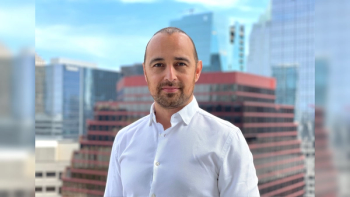
The Risk to Rural Health Networks: Q&A with Marcel Botha
Proposed cuts to Medicaid could cause serious issues in rural areas of the United States.
Proposed cuts to Medicaid will have significant impacts on the health industry. One area that will be heavily impacted by potential are rural health networks. Marcel Botha, CEO of 10XBeta, spoke with Pharmaceutical Executive about the proposed cuts and the impact to rural areas.
Pharmaceutical Executive: How will cuts to Medicaid uniquely impact the rural healthcare systems?
Marcel Botha: Cuts to Medicaid would disproportionately devastate rural healthcare systems already on the brink. According to the Center for American Progress, over 300 rural hospitals in the United States are at immediate risk of closure, with 190 located in Medicaid expansion states—where Medicaid forms a critical revenue stream. These hospitals operate on razor-thin margins and serve populations that are older, poorer, and more likely to be uninsured or underinsured. In rural America, where more than 66 million people live, Medicaid covers over 18% of adults under 65. If funding is slashed, essential services like maternity care, behavioral health, and pediatric care could disappear almost overnight. The fallout won’t be limited to health outcomes—rural hospitals are often the largest employers in their regions, so closures would crater local economies and deepen community dislocation. Medicaid cuts wouldn’t just reduce spending; they would erase entire care networks and leave vast parts of the country without access to basic healthcare.
PE: What impact will DOGE’s efforts have on rural health programs?
Botha: The Department of Government Efficiency (DOGE) is compounding the rural healthcare crisis by dismantling the very programs that keep these systems afloat. Under the pretense of cutting waste, DOGE has targeted initiatives like the $175 million Teaching Health Centers Graduate Medical Education (THCGME) program, which supports medical residencies in underserved areas. These programs are essential pipelines for staffing rural clinics and hospitals. DOGE’s hiring freezes and staff reductions are exacerbating existing provider shortages, while cuts to federal grants have disrupted vaccination campaigns, mobile clinics, and telehealth projects—lifelines in areas where travel is a barrier to care.
Among the agencies most affected is the Health Resources and Services Administration (HRSA)—a federal agency within the Department of Health and Human Services that plays a central role in improving healthcare access for people who are geographically isolated or economically disadvantaged. HRSA supports thousands of health centers and provider training programs in rural areas, ensuring access to primary care, maternal health services, and substance use treatment. DOGE’s cuts to HRSA funding and staffing have delayed infrastructure upgrades, halted expansion plans, and undermined long-term planning capacity in rural communities. Far from creating efficiency, these cuts create abandonment—especially for America’s most medically vulnerable regions.
PE: How can the U.S. address this potential rural healthcare crisis?
Botha: Avoiding a collapse in rural healthcare will require urgent and coordinated action. Medicaid must be protected and strengthened. Rural hospitals and clinics rely on these reimbursements to survive, and any cuts will lead to service reductions, staffing losses, and closures. The federal government should restore and expand programs like THCGME and HRSA that support rural provider training, infrastructure, and innovation.
At the same time, new models of care delivery will need to be developed—and that’s where public-private partnerships like the ARPA-H PARADIGM initiative will play a crucial role. 10XBeta has been selected as a lead partner in this national effort, which will focus on building a mobile, scalable healthcare platform that delivers hospital-level care directly to underserved communities. As part of this work, 10XBeta will develop ruggedized medical technologies, AI-driven clinical guidance tools, and connected data platforms to support diagnostics, multi-cancer screening, chronic disease management, and perinatal care. These systems will be designed to reach patients where they are, overcoming geographic and systemic barriers. By flipping the traditional healthcare model—bringing care to the patient instead of asking patients to travel to hospitals that may no longer exist—this work aims to redefine rural care access in the U.S. The vision is simple but profound: where you live should not determine the quality of care you receive.
PE: How much of the U.S. population relies on rural healthcare networks?
Botha: More than 66 million Americans—approximately one in five—live in rural areas and rely on a healthcare infrastructure that is rapidly deteriorating. These communities tend to be older, have higher rates of chronic illness, and face steeper barriers to accessing preventative and emergency care. Despite their size, rural healthcare systems are often overlooked in national planning and disproportionately vulnerable to policy shifts. Their collapse wouldn’t just impact those living in remote areas—it would strain nearby urban hospitals, degrade the national provider workforce, and deepen disparities in outcomes across geographic lines. The integrity of rural health is a national issue, not a peripheral one.
Newsletter
Lead with insight with the Pharmaceutical Executive newsletter, featuring strategic analysis, leadership trends, and market intelligence for biopharma decision-makers.





